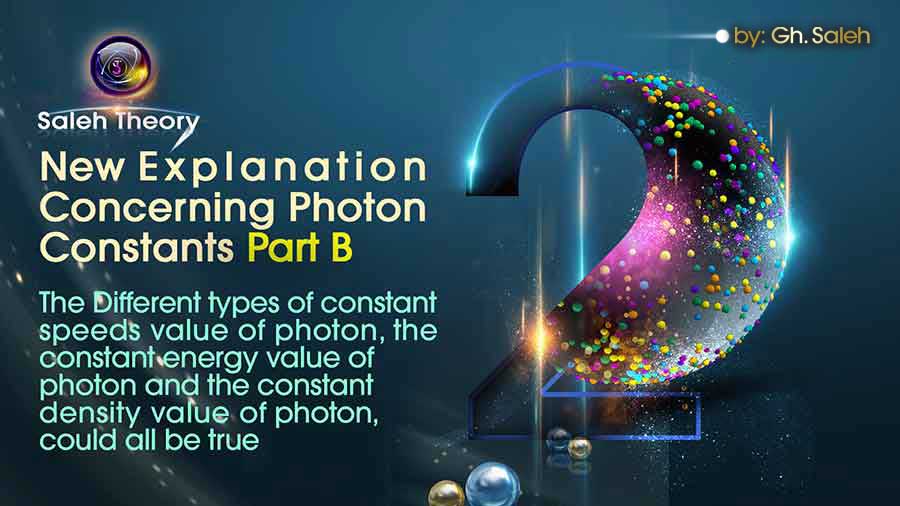
New Explanation Concerning Photon Constants Part B
The different types of constant speeds value of photon, the constant energy value of photon and the constant density value of photon, could all be true
A) The different types of photon speeds are constant
Considering that the birthplace of a photon is an excited electron that rotates around a nucleus, and the excitation of an electron results in the emission of a photon, the photon will have linear motion. The linear speed of the photon (Vl) can be calculated using the following equations:
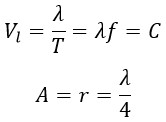
The above equations are linear equations in which “λ” represents the wavelength, “T” the period, “f” the frequency, and “A” the amplitude, which is equal to the radius of photon rotation in a helical motion (r). These equations express linear speed and are obtained by dividing the linear distance travelled (λ) by the time taken during one period (T). In fact, we have calculated the linear speed along the linear path.
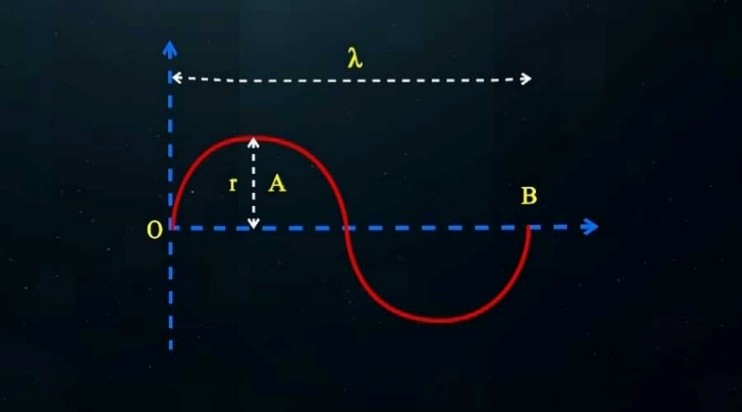
However, a photon has a wave-like motion due to the rotational movement of electrons around the nucleus. To calculate the wave path or the curved path of electromagnetic waves, we proceed as follows:
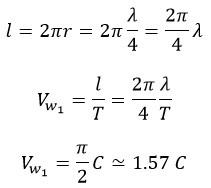
Where “l” is the travelled distance and “Vw1” is the wave-like speed. The result of combining these two linear and rotational motions is the creation of a helical motion, as shown in the following figure.
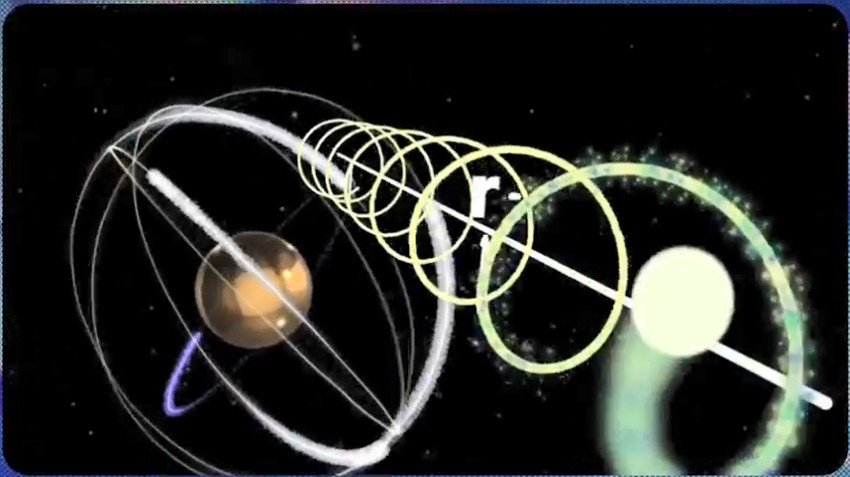
If we pay attention, a photon has two different speeds. This difference exists both in terms of the appearance of equations and the ones of values obtained. In fact, these two speeds (linear and wave-like) can be considered as shades of the speed in helical motion. Where (Cnew 1) is the constant speed on the helical path, which is the resultant of these two perpendicular velocities. which can be calculated as follows:
Resultant velocity = Linear velocity + Wave-like velocity

Where the “(Cnew 1)” is the speed of the photon in the large helix (First Helix), which is the basic and fundamental speed of photon (electromagnetic waves).
But an electron, in addition to its rotational motion around the central nucleus of the atom, also has rotational motion around itself, leading to the creation of another helical motion. This new helix (Second Helix) is smaller in comparison to the previous one. Therefore, when a photon is emitted from an electron, it will follow a path of a large helical motion (First Helix) and a path of a smaller helical motion (Second Helix).

Considering the above figure, the resultant velocity of the photon in the first helix and second helix motion paths can be calculated as follows:
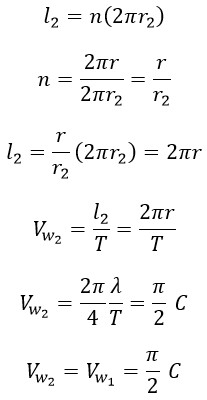
Where “l2” is the travelled distance in small helix, “n” is the number of turns of the photon in the small helix in one period of big helix, “r2” is the radius of the small helix and “Vw2” is the rotational speed in small helix. And two rotational velocities are parallel. So, we have:

Considering the figure, the resultant velocity of a photon (Cnew 2) in two helical paths, the large helix (first) and the small helix (second), can be obtained from the following equations:
The resultant velocity = The sum of the velocities in the two helical paths + The linear velocity
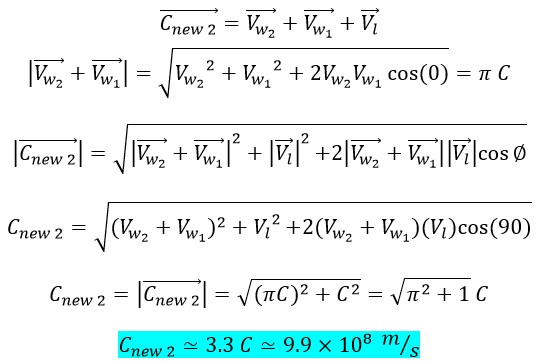
The photon itself also has a rotational motion around itself, which creates a third helix. Using the following equations, this speed can be calculated:
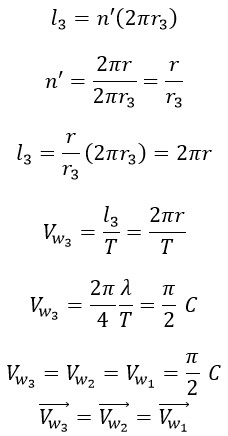
Where “l3” is the travelled distance in the third helix, “n’” is the number of turns of the photon in the third helix in one period of the big helix (first), “r3” is the radius of the third helix and “Vw3” is the rotational speed in the third helix.
Similarly, the resultant velocity of a photon (Cnew 3) is equal to the sum of its speed in helical paths and the linear speed. Therefore, we have:
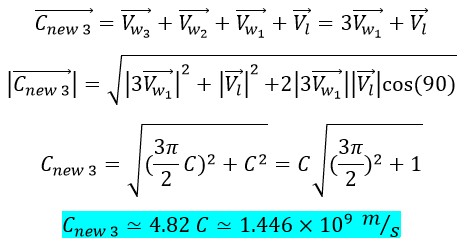
Moreover, the speed of each of these motions has been calculated in the previous sections, and it has been shown that these motions and their speeds are identical and constant for all photons.
B) The amount of energy of photons is constant
According to what was stated in section (a), the path of a photon is a nested helical trajectory. By considering three interwoven helices (representing the ideal, real, and actual states), we proceed to examine the photon during the initial moments of electron emission.
Since, according to Saleh's theory, the mass of all photons is equal (m = 1.64 ⤫ 10-36kg), and their velocity is also constant, the product of one-half the mass and the square of the velocity—which represents the initial kinetic energy of the photon—is constant (1/2 mv2) at time t = 0. At this moment (t = 0), this energy is the same across the entire electromagnetic spectrum. However, due to differences in the helical path radius for various spectral frequencies, the energy consumed (1/2 mr2 ѡ2) differs.
Therefore, the transferred energy of photons—which corresponds to the value obtained from Planck’s law—is specific and constant for each spectral band with a different frequency.

In fact, we can say that although different energy values are considered for photons with different frequencies, at time (t = 0, t=ɛ), the energy of all of them is equal, since there is no rotational motion at that moment.

Therefore, the final speed of the photon, which takes into account the existence of the three nested helical motions (v = cnew3)—can be used to calculate the initial energy.
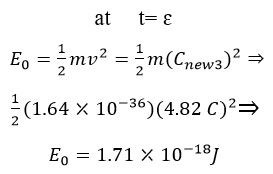
Note:
The initial energy at the moment (t = 0, t= ɛ) is the same for all photons. However, at later moments, this initial energy is divided into two components, depending on the frequency and the rotational radius of the photon: one is translational energy, and the other is rotational energy.

The translational energy is equal to hf, the same value obtained from Planck’s law, i.e.

and the rotational energy is equal to (1/2 mr2 ѡ2).

The sum of the translational and rotational energy for each photon equals the initial energy (E0), which is a constant value (1.71 ⤫ 10-18J).
C) Density of photons can be constant
As stated in part A, all photons have the same and constant mass. On the other hand, since they all have the same radius, the density of all photons can therefore be constant and identical. The density of a photon can be calculated as follows:
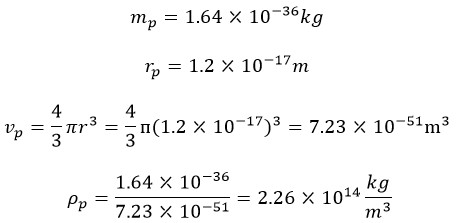
References:
[1] Saleh, Gh. "New Explanation Concerning Photon Constants Part A | 7 strong reasons that demonstrate the mass of photon is constant." Saleh Theory, 28 Jun. 2025, https://www.saleh-theory.com/article/new-explanation-concerning-photon-constants-part-a-br-7-strong-reasons-that-demonstrate-the-mass-of-photon-is-constant
[2] Saleh, Gh. "New Proof of Photon Velocity (V_T= 3.3 C) Utilising Mathematical Equations, Physical Laws and the Experiments of MIT and Michigan University in the Universe 2025 Part A." Saleh Theory, 26 Apr. 2025, https://www.saleh-theory.com/article/a-new-proof-of-photon-velocity-vsubtsub-33-c-utilising-mathematical-equations-physical-laws-and-the-experiments-of-mit-and-michigan-university-in-the-universe-2025-part-a
[3] Saleh, Gh. "New Proof of Photon Velocity (V_T= 3.3 C) Utilising Ever-True Planck Energy Equation and Kinetic Energy Equation in the Universe 2025 Part B." Saleh Theory, 03 May 2025, https://www.saleh-theory.com/article/a-new-proof-of-photon-velocity-vsubtsub-33-c-utilising-ever-true-planck-energy-equation-and-kinetic-energy-equation-in-the-universe-2025-part-b
[4] Saleh, Gh. "New Proof of Photon Velocity (V_T= 3.3 C) Utilising the Young's Double-Slit Experiment and the Motional Model of Emitted Photons from Electrons in the Universe 2025 Part C." Saleh Theory, 03 May 2025, https://www.saleh-theory.com/article/a-new-proof-of-photon-velocity-vsubtsub-33-c-utilising-the-youngs-double-slit-experiment-and-the-motional-model-of-emitted-photons-from-electrons-in-the-universe-2025-part-c
[5] Saleh, Gh. "A New Explanation for the Constancy of All Parameters of Photons." Saleh Theory, 26 May. 2025, https://www.saleh-theory.com/article/a-new-explanation-for-the-constancy-of-all-parameters-of-photons
[6] Saleh, Gh. "A New Proof of the Constancy of Photon Mass Using Its Initial Energy." Saleh Theory, 06 Mar. 2025, https://www.saleh-theory.com/article/a-new-proof-of-the-constancy-of-photon-mass-using-its-initial-energy
[7] Saleh, Gh. "Discovery of the Hundred-Year-Old Lost Mathematical and Physical Relationship Between the Classical Kinetic Energy of Photons and Planck's Everlasting Experimental Equation in the Universe (Planck-Saleh Energy Equation)." Saleh Theory, 28 Jun. 2024, https://www.saleh-theory.com/article/discovery-of-the-hundred-year-old-lost-mathematical-and-physical-relationship-between-the-classical-kinetic-energy-of-photons-and-plancks-everlasting-experimental-equation-in-the-universe-planck-saleh-energy-equation
[8] Saleh, Gh. "New, Marvelous and Revolutionary Discoveries About Photon." Saleh Theory, 07 Sep. 2023, https://www.saleh-theory.com/article/new-marvelous-and-revolutionary-discoveries-about-photon
[10] Saleh, Gh. "New Discoveries About the Speed of Electromagnetic Waves 2024 Part A." Saleh Theory, 12 Oct. 2023, https://www.saleh-theory.com/article/new-discoveries-about-the-speed-of-electromagnetic-waves-2024-part-a
[11] Saleh, Gh. "New Discoveries About the Speed of Electromagnetic Waves 2024 Part B." Saleh Theory, 30 Oct. 2023, https://www.saleh-theory.com/article/new-discoveries-about-the-speed-of-electromagnetic-waves-2024-part-b
[12] Saleh, Gh. "New Discoveries About the Speed of Electromagnetic Waves 2024 Part C." Saleh Theory, 06 Nov. 2023, https://www.saleh-theory.com/article/new-discoveries-about-the-speed-of-electromagnetic-waves-2024-part-c
[13] Saleh, Gh. "New, Marvelous and Revolutionary Discoveries About Photon." Saleh Theory, 07 Sep. 2023, https://www.saleh-theory.com/article/new-marvelous-and-revolutionary-discoveries-about-photon
[19] Saleh, Gh. "10 Great Reasons for Helical Motion of Photon." APS Meeting Abstracts. 2022.
[26] Saleh, Gh. "Photon has a Constant Rest Mass!." Saleh Theory, 16 Mar. 2018, https://www.saleh-theory.com/article/photon-has-a-constant-rest-mass
[27] Saleh, Gh. "The Unseen World of Photon." Saleh Theory, 16 Jul. 2017, https://www.saleh-theory.com/article/the-unseen-world-of-photon
[28] Saleh, Gh. "A Revolution in Light Theory." Saleh Theory, 11 Apr. 2017, https://www.saleh-theory.com/article/a-revolution-in-light-theory
 Download PDF
Download PDF Articles
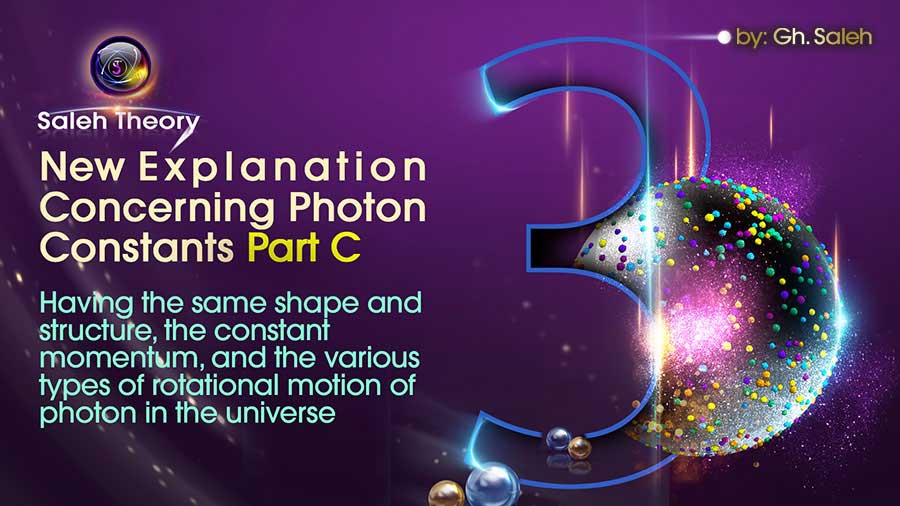
Having the same shape and structure, the constant momentum, and the various types of rotational motion of photon in the universe
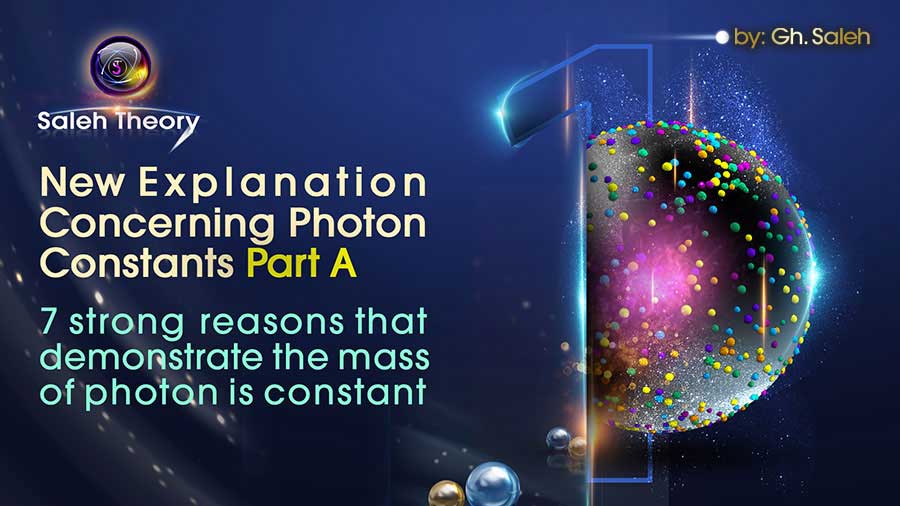
7 strong reasons that demonstrate the mass of photon is constant





